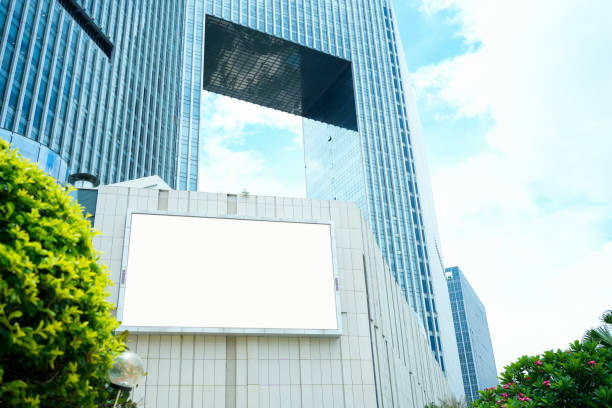Glow sign boards have become an integral part of modern signage and advertising. These illuminated displays offer businesses a vibrant and eye-catching way to attract customers and convey their message effectively. In this comprehensive guide, we’ll delve into everything you need to know about glow sign boards, from their history and types to their advantages, applications, design considerations, and more.
Introduction to Glow Sign Boards
Glow sign boards, also known as illuminated signs, are signage displays that use light sources to enhance visibility, particularly during low-light conditions or at night. These signs are commonly used for advertising, branding, directional signage, and decorative purposes.
History of Glow Sign Boards
The history of glow sign boards is a journey marked by the evolution of lighting technology and advertising strategies. Originating in the late 19th century, early illuminated signs utilized gas lighting, which gradually gave way to electric bulbs and neon technology. Neon signs, introduced in the early 20th century, became iconic for their vibrant glow and visual appeal.
The development of fluorescent lighting in the 1930s offered a more energy-efficient alternative, while the advent of Light Emitting Diodes (LEDs) in the 1960s revolutionized illuminated signage with their longevity and flexibility. Today, glow sign boards encompass a wide range of applications, from traditional storefront signs to dynamic digital displays, shaping the visual landscape of cities and reflecting the ongoing innovation in both lighting and advertising industries.
Types of Glow Sign Boards
LED Glow Sign Boards
LED (Light Emitting Diode) glow sign boards are one of the most popular types of illuminated signage. They utilize energy-efficient LED lights to create bright and long-lasting displays. LED signs offer versatility in terms of design, color options, and animation capabilities.
Neon Glow Sign Boards
Neon glow sign boards, characterized by their distinctive neon tubes filled with gas, have been around for decades. Despite the rise of LED technology, neon signs remain popular for their classic, retro aesthetic and vibrant glow.
Fluorescent Glow Sign Boards
Fluorescent glow sign boards use fluorescent lamps to produce bright, even illumination. While not as energy-efficient as LED signs, fluorescent signs are still widely used in various applications due to their affordability and effectiveness.
Applications of Glow Sign Boards
Glow sign boards find diverse applications across various industries and settings.
Commercial Use
In retail environments, glow sign boards are commonly used to attract customers, promote products, and highlight special offers or promotions.
Advertising and Marketing
Glow sign boards are a popular choice for outdoor advertising, as they can effectively grab the attention of passersby and convey advertising messages in a visually compelling manner.
Directional Signage
In large facilities such as shopping malls, airports, and hospitals, glow sign boards are used for directional signage to guide visitors and customers to their destinations.
Design and Customization
Design and customization play integral roles in the effectiveness of glow sign boards. Businesses and advertisers leverage these aspects to create visually compelling and impactful signage that communicates their brand message effectively.
Design encompasses various elements, including typography, imagery, color scheme, and layout, all of which contribute to the overall aesthetic appeal and readability of the sign. Customization allows businesses to tailor the signage to their specific needs, whether it’s incorporating their logo, highlighting promotions, or matching their brand’s visual identity.
Advancements in technology, such as LED displays and digital signage, have expanded the possibilities for design and customization, enabling dynamic content changes and interactive features. Ultimately, well-designed and customized glow sign boards can attract attention, enhance brand visibility, and drive engagement, making them valuable assets for businesses in today’s competitive market.
Factors to Consider Before Installing
Before installing a glow sign board, several factors should be taken into account to ensure its effectiveness and longevity.
Location
Choosing the right location for the sign is crucial for maximizing visibility and impact.
Visibility
Consider factors such as viewing distance, angle, and obstructions that may affect the visibility of the sign.
Maintenance
Regular maintenance is essential to keep the glow sign board in optimal condition and prevent issues such as fading or malfunctioning lights.
Cost of Glow Sign Boards
The cost of a glow sign board varies depending on factors such as size, materials, design complexity, and illumination technology. While LED signs may have a higher upfront cost, they tend to be more energy-efficient and have lower maintenance requirements in the long run.
Common Misconceptions About Glow Sign Boards
Here are common misconceptions about glow sign boards in bullet points:
- High Energy Consumption
- Limited Customization
- High Maintenance
- Expensive
Conclusion
Glow sign boards are versatile, eye-catching, and effective tools for advertising, branding, and wayfinding. By understanding the different types, applications, and design considerations, businesses can harness the power of glow sign boards to attract customers and stand out in today’s competitive market.

